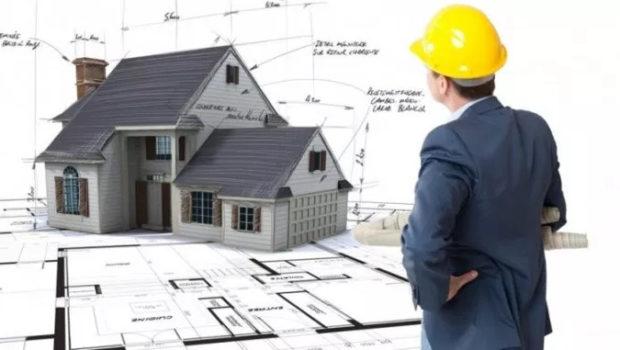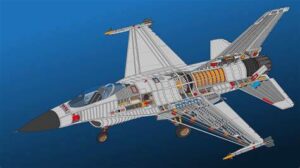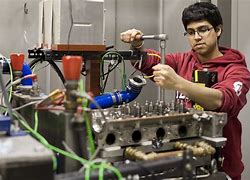Top 20 Structural Engineer Fresher Interview Questions
Table of Contents
Top 20 Structural Engineer Fresher Interview Questions
1. Can you explain what structural engineering is?
- Structural engineering is a branch of civil engineering that focuses on designing and analyzing structures to ensure their stability, safety, and functionality. It involves the application of physics and mathematics to create safe and efficient structures.
Example – “Structural engineering involves designing and analyzing buildings, bridges, dams, and other infrastructure to ensure they can withstand various forces and loads. It’s crucial for ensuring the safety and longevity of structures.”
2. What are the primary forces that structures must withstand?
- Structures must withstand various forces, including dead loads (permanent, fixed loads), live loads (temporary, variable loads), wind loads, seismic loads, and temperature effects.
Example – “Dead loads come from the weight of the structure itself and any permanent fixtures. Live loads include people, furniture, and other temporary loads. Wind loads and seismic loads are external forces that structures must resist, and temperature effects can cause expansion and contraction.”
3. What are the key components of a structural design process?
- The structural design process typically includes planning, analysis, design, and construction phases.
Example – “Planning involves understanding project requirements and constraints. Analysis involves assessing loads and determining structural members’ sizes and shapes. Design entails creating detailed plans and drawings, and construction involves executing the design plan.”
4. Can you explain the importance of codes and standards in structural engineering?
- Codes and standards are essential as they provide guidelines for designing safe and reliable structures, ensuring consistency and compliance with industry best practices.
Example – “Codes and standards are established to ensure that structural designs meet minimum safety and performance criteria. They provide a basis for consistent and reliable engineering practices, helping prevent structural failures.”
5. What software tools are commonly used in structural engineering, and are you familiar with any of them?
- Common software tools include AutoCAD, ETABS, SAP2000, and STAAD. Pro.
Example – “Mention any software tools you are familiar with and describe your experience using them. You may add something like, “I am familiar with AutoCAD and have used it to create structural drawings and plans.”
6. How do you ensure the sustainability of a structural design?
- Sustainable structural design involves minimizing resource consumption, energy usage, and environmental impact throughout a structure’s lifecycle.
Example – “To ensure sustainability, I would consider materials with lower environmental footprints, optimize energy-efficient designs, and incorporate renewable energy sources when possible. Additionally, I would focus on long-term durability to reduce maintenance and replacement needs.”
7. What are the different materials commonly used in structural engineering?
- Common materials include concrete, steel, wood, and masonry. Each has its advantages and is selected based on project requirements.
Example – “Concrete is often used for its strength and durability, steel for its versatility and high strength-to-weight ratio, wood for its aesthetic appeal and sustainability, and masonry for its fire resistance and load-bearing capacity.”
8. How do you ensure the safety of a building during an earthquake?
- Earthquake safety involves designing structures to resist seismic forces by providing adequate reinforcement and structural systems.
Example – “Safety measures include using seismic-resistant materials, designing flexible structures to absorb energy, and following seismic codes and regulations. Regular inspections and maintenance are also crucial to identify potential weaknesses.”
9. What are the challenges you might face when working on a high-rise building project?
- High-rise buildings present unique challenges such as wind loads, foundation design, and structural stability.
Example – “Challenges in high-rise projects include wind-induced vibrations, foundation engineering for supporting heavy structures, and ensuring structural stability to prevent sway and other dynamic responses. Adequate bracing and structural analysis are critical.”
10. Can you explain the concept of a load-bearing wall?
– A load-bearing wall is a structural element that carries the weight of a building or part of it above it.
Example – “Load-bearing walls support vertical loads from the floors and roof and transfer them to the foundation. These walls are critical for maintaining structural integrity and should not be removed without proper reinforcement.”
11. What is the importance of a foundation in a structure?
– Foundations provide structural support and distribute loads from the building to the underlying soil or rock.
Example – “Foundations are crucial because they ensure the stability of a structure by preventing settlement and ensuring even load distribution. They also help mitigate the effects of soil subsidence and lateral forces.”
12. How do you calculate the load-bearing capacity of a foundation soil
– The load-bearing capacity is determined by conducting geotechnical investigations and soil tests.
Example – “The load-bearing capacity of foundation soil is calculated by performing soil tests, such as Standard Penetration Tests (SPT) or Cone Penetration Tests (CPT), and analyzing the results. This information helps determine the type of foundation (e.g., shallow or deep) and its design parameters.”
13. What is a truss, and how does it work in structural engineering?
– A truss is a structural framework consisting of triangular-shaped members designed to efficiently distribute loads.
Example – “Trusses are used to span long distances and support loads by distributing them along the members’ axial forces. They are commonly used in roof and bridge structures.”
14. What are the factors that affect the choice between steel and concrete for a structural project?
– Factors include project requirements, cost, aesthetics, and environmental considerations.
Example – “The choice between steel and concrete depends on factors such as the project’s purpose, budget, design aesthetics, and sustainability goals. Steel is often chosen for its versatility and speed of construction, while concrete offers durability and fire resistance.”
15. How do you ensure the long-term durability of a concrete structure?
– Long-term durability involves protecting concrete from corrosion, cracking, and other forms of deterioration.
Example – “To ensure the long-term durability of concrete structures, measures such as proper mix design, adequate cover to reinforcement, use of corrosion-resistant materials, and regular maintenance are essential. Protective coatings and sealants can also be applied.”
16. Can you explain the concept of a cantilever beam and where it might be used in structural engineering?
– A cantilever beam is a structural element supported at one end and extending horizontally or diagonally.
Example – “Cantilever beams are used in various applications, such as balconies, bridges, and diving boards. They are designed to support loads at one end while the other end remains unsupported, relying on the beam’s inherent structural stability.”
17. How do you approach a project that requires retrofitting or strengthening an existing structure?
– Retrofitting involves improving the performance and safety of an existing structure.
Example – “When retrofitting an existing structure, I would start by conducting a thorough structural assessment to identify weaknesses and deficiencies. Then, I would develop a retrofitting plan that may involve adding structural elements, strengthening existing components, or implementing advanced materials and technologies.”
18. What role does teamwork play in structural engineering projects?
– Teamwork is crucial for effective collaboration among architects, engineers, contractors, and other stakeholders.
Example – “Teamwork fosters effective communication, coordination, and problem-solving in structural engineering projects. It ensures that design intent is translated accurately into the final structure and helps address challenges efficiently.”
19. Can you discuss any relevant project experience or internships you have had?
– Provide details about any hands-on experience you have in structural engineering.
Example – “Highlight any relevant internships, coursework projects, or extracurricular activities that have exposed you to structural engineering principles and practices. Discuss the skills and knowledge gained during these experiences.”
20. What are your career goals in structural engineering, and how do you plan to achieve them?
– Share your long-term aspirations and your strategy for professional growth.
Example – “Discuss your career aspirations, whether it’s becoming a licensed structural engineer, specializing in a particular area, or contributing to sustainable design. Mention your willingness to pursue additional education or certifications to achieve your goals.”




